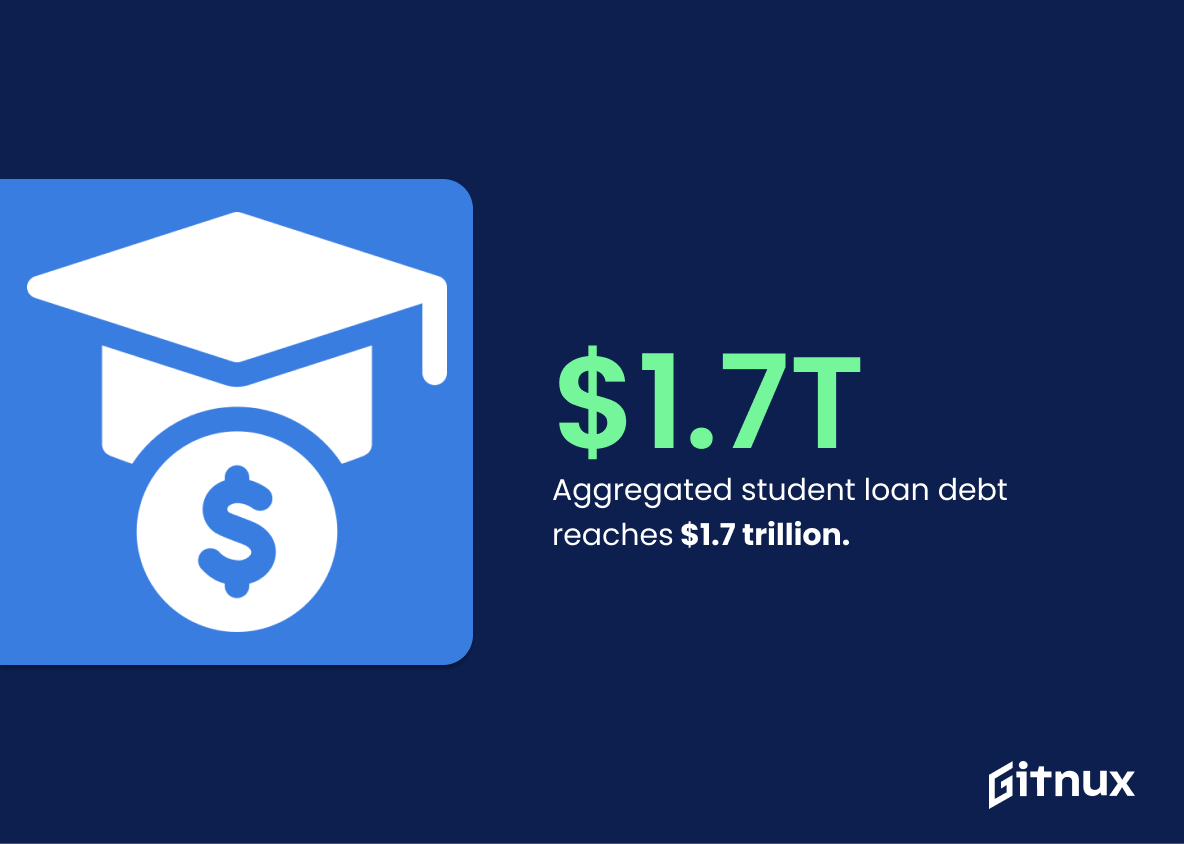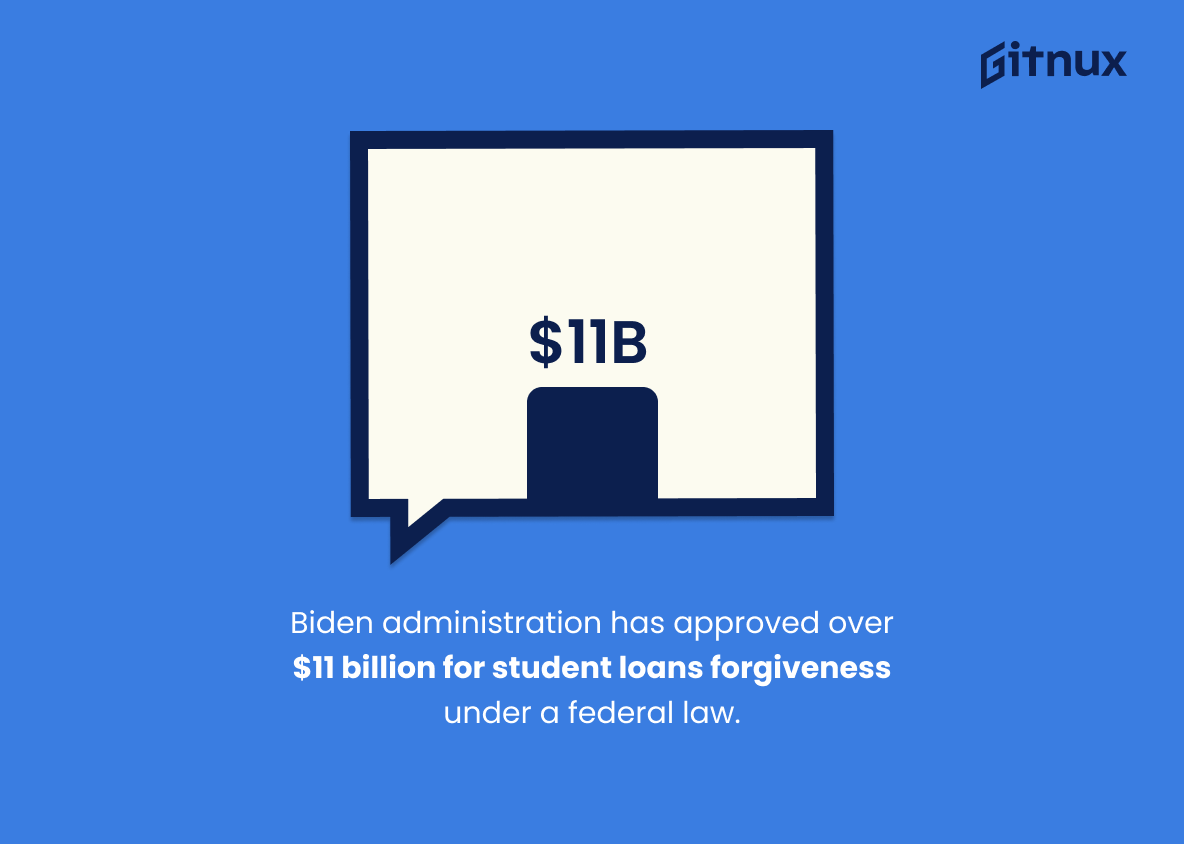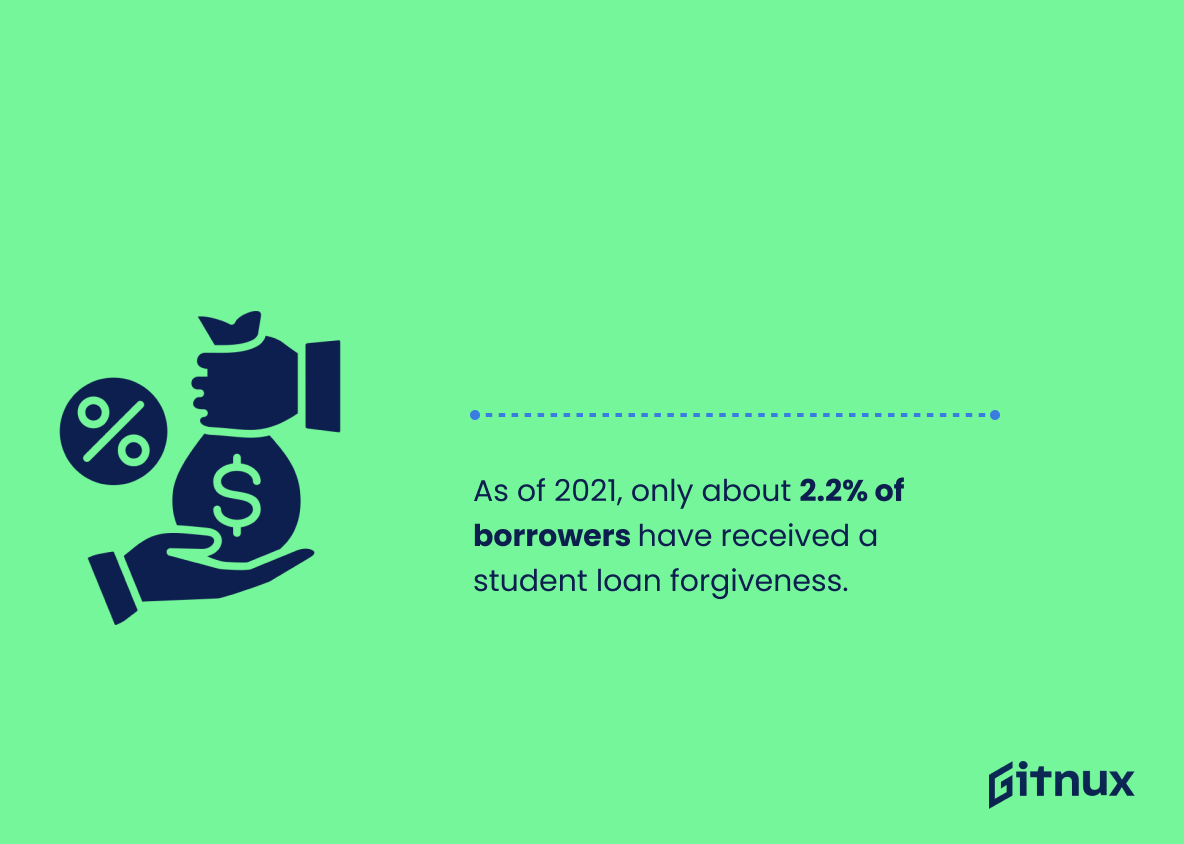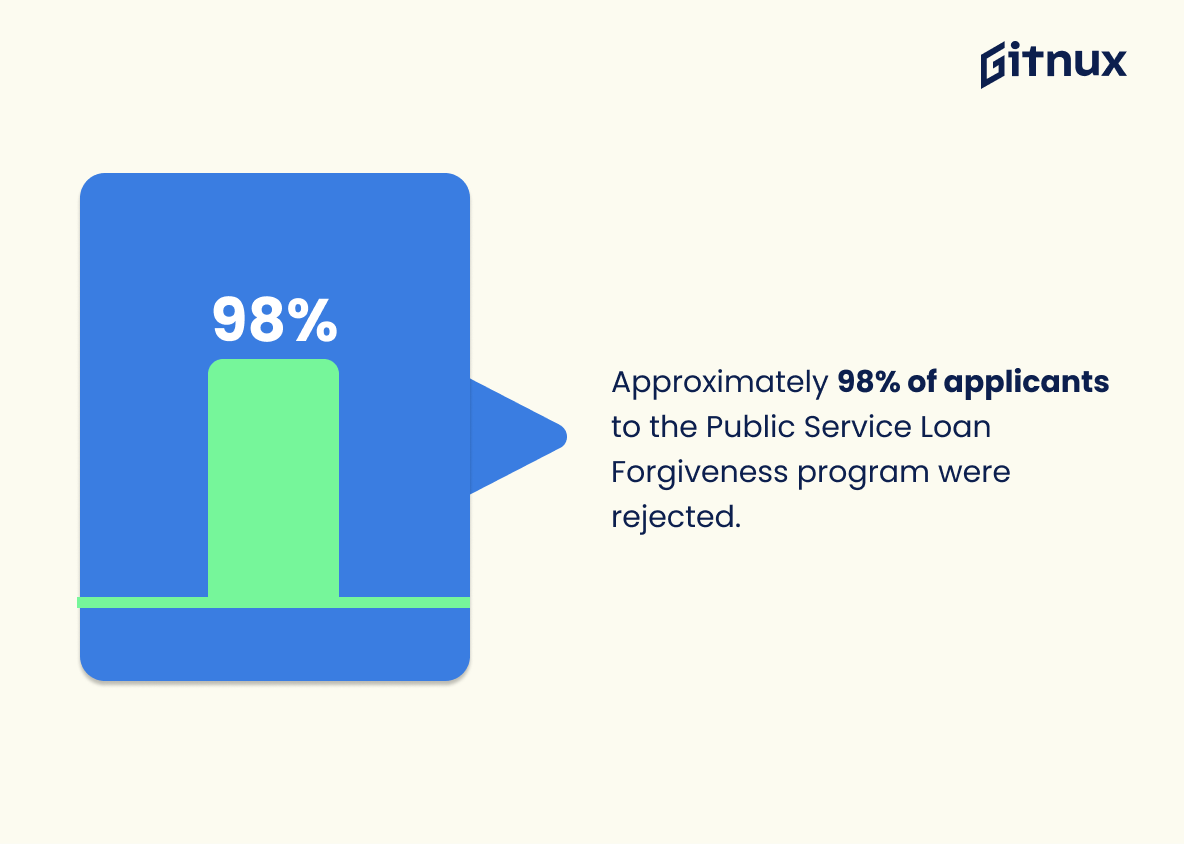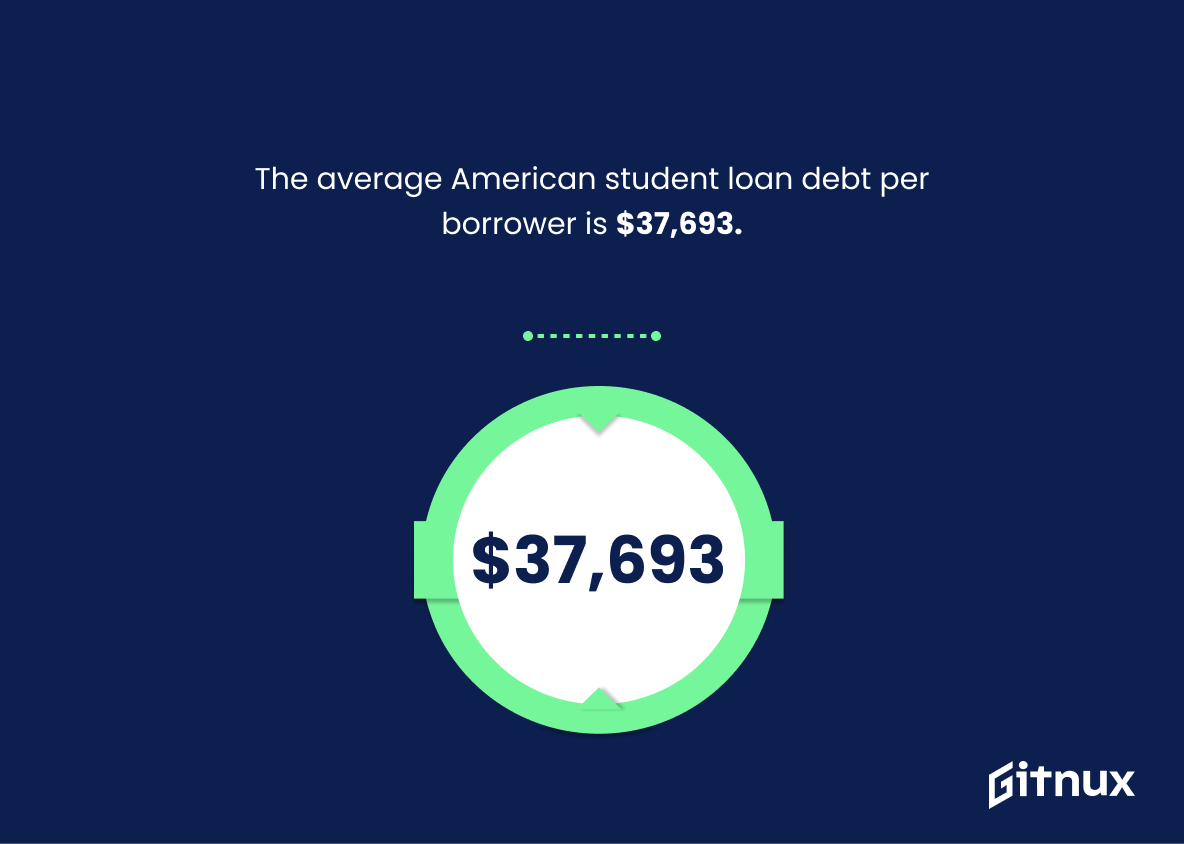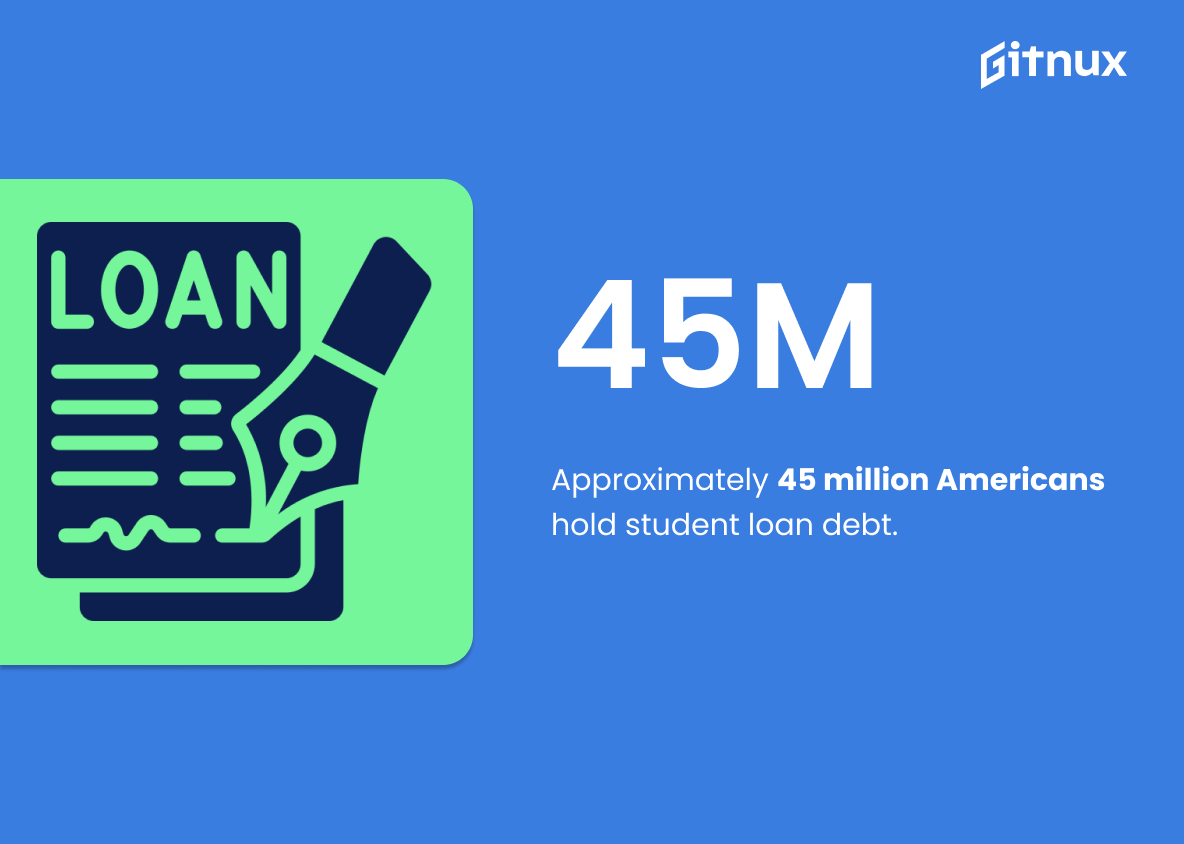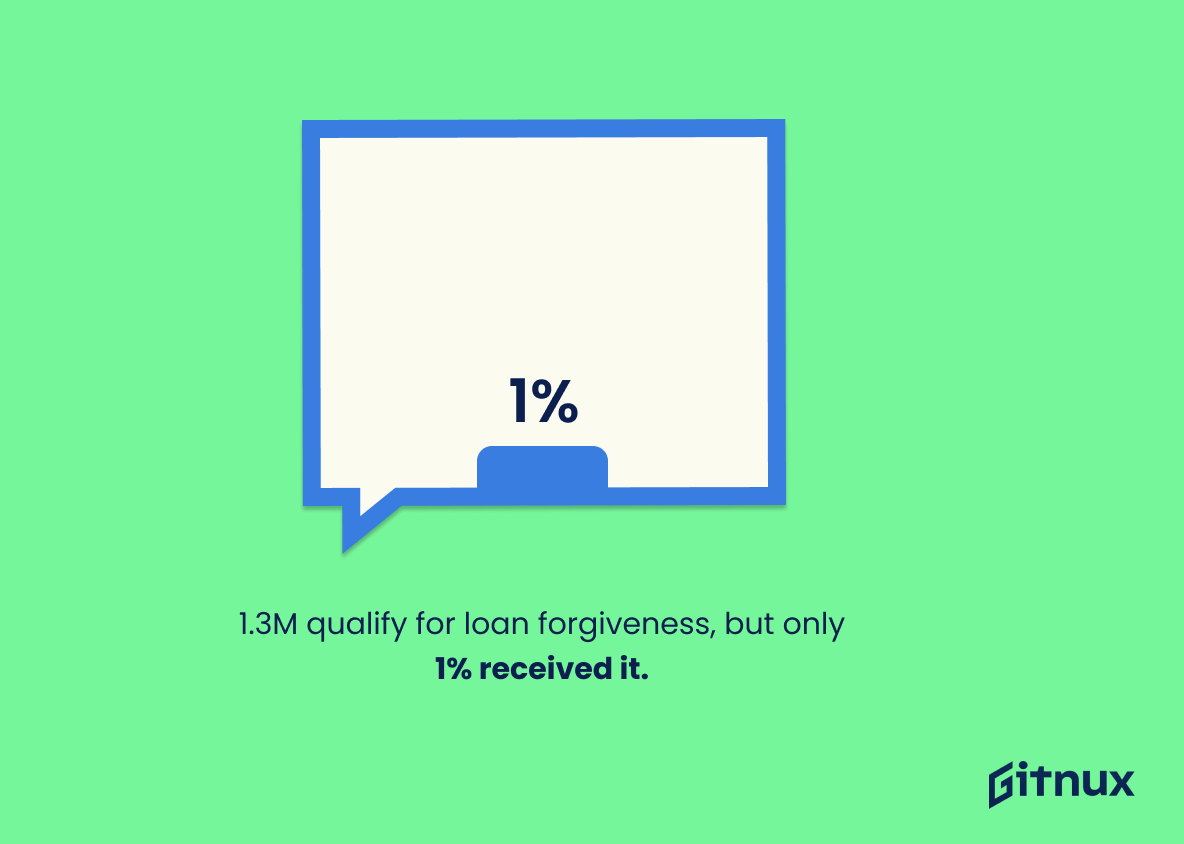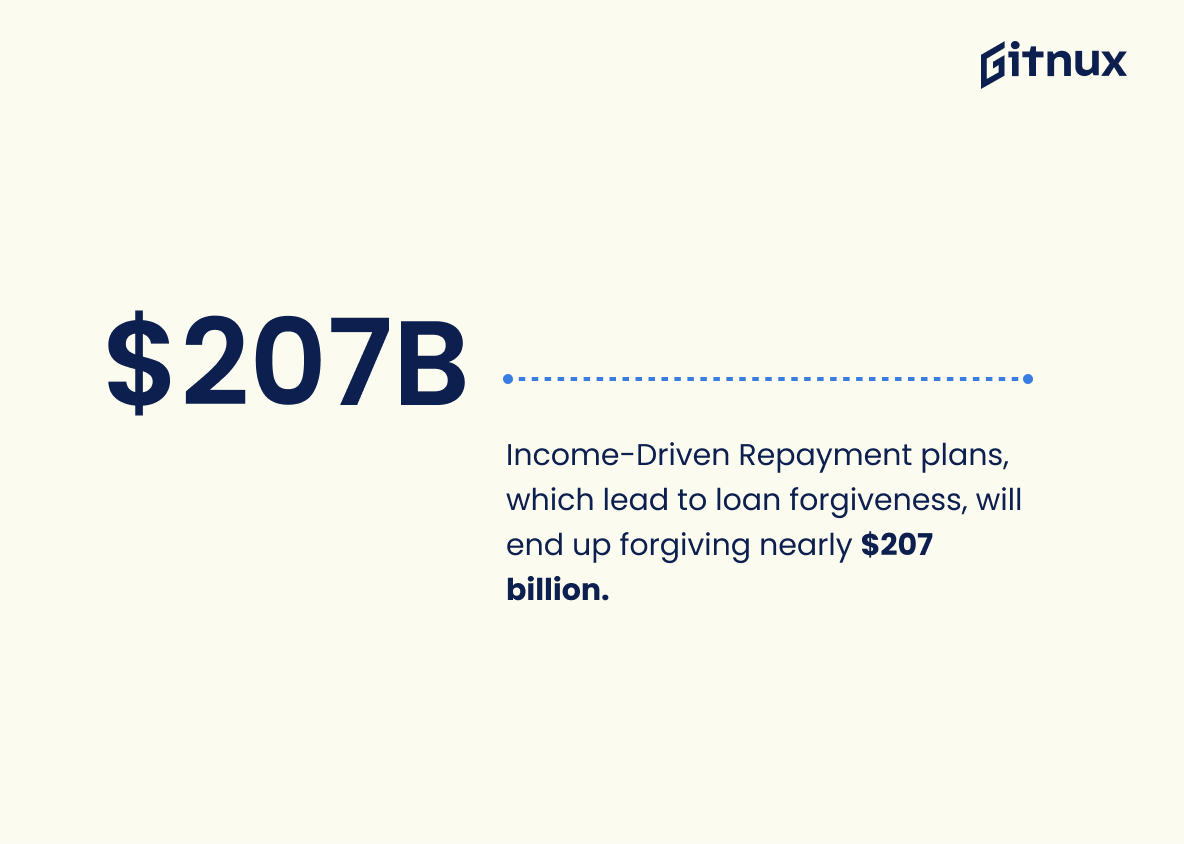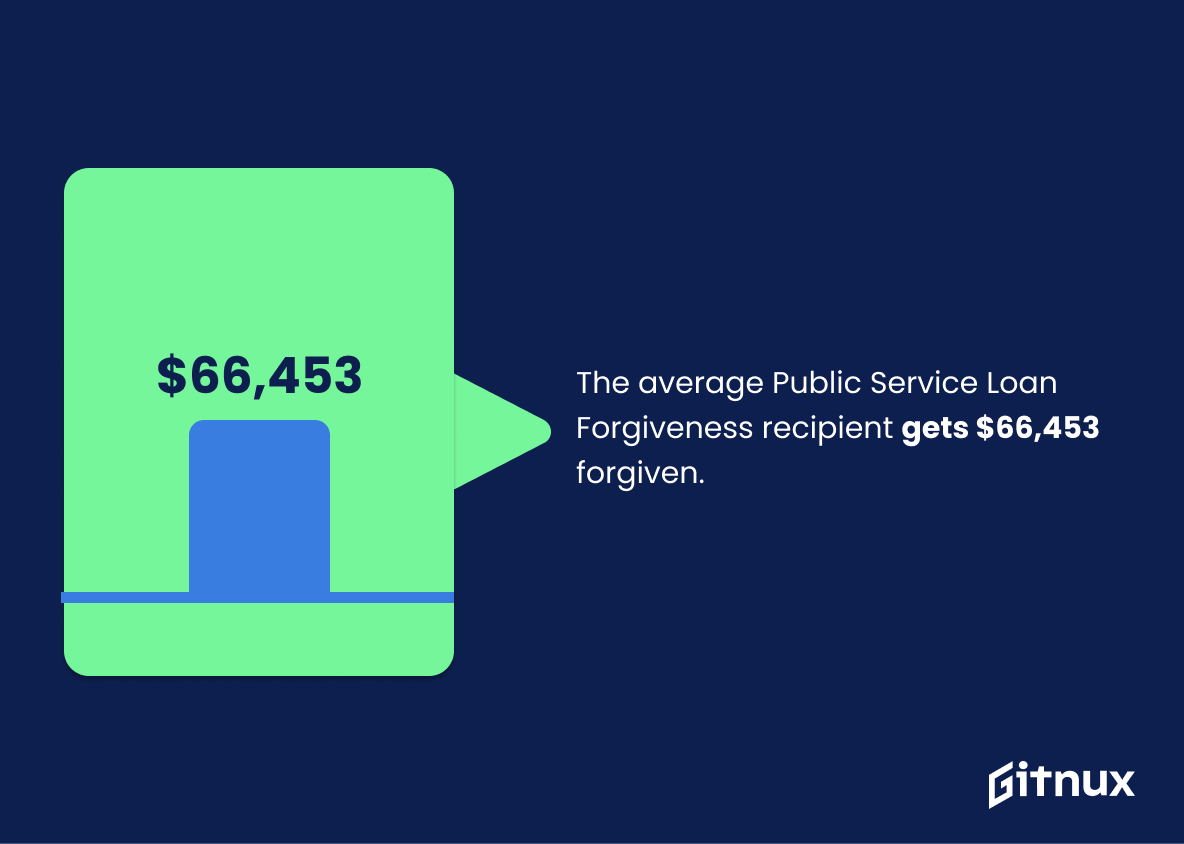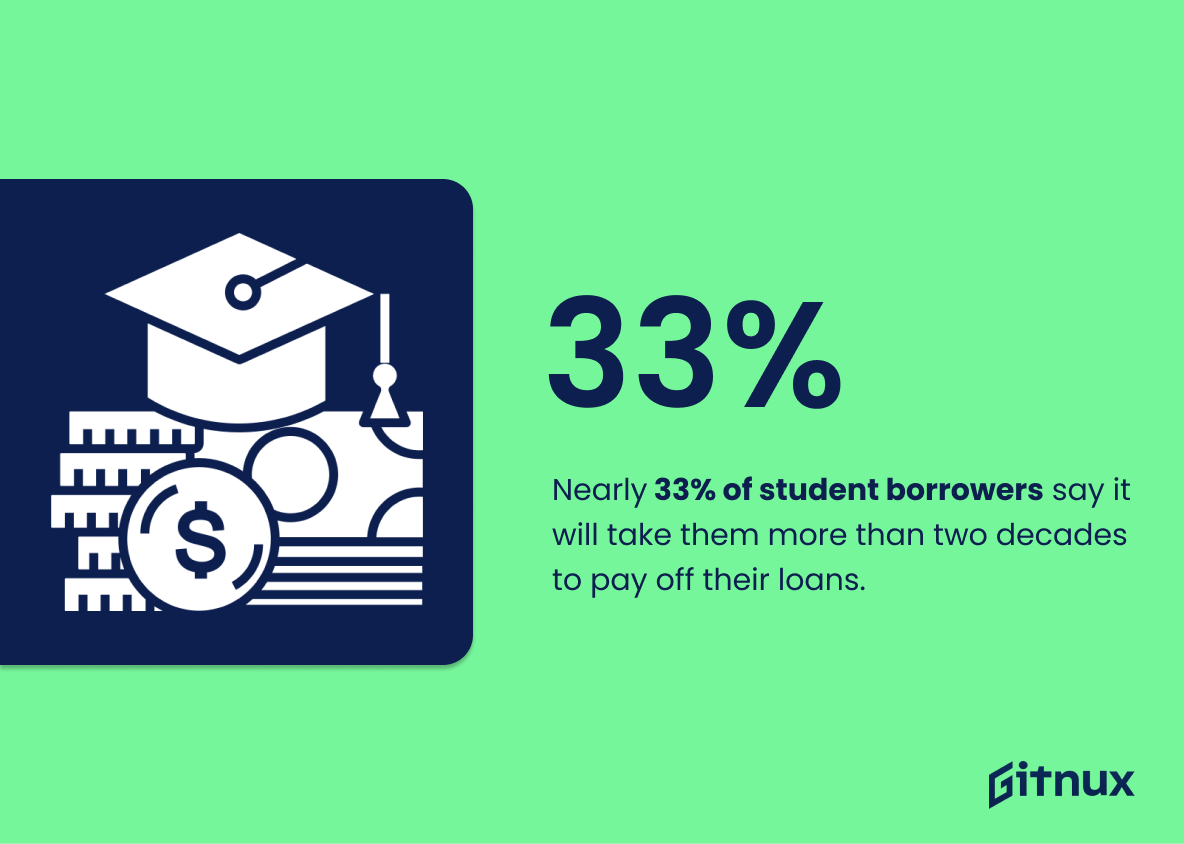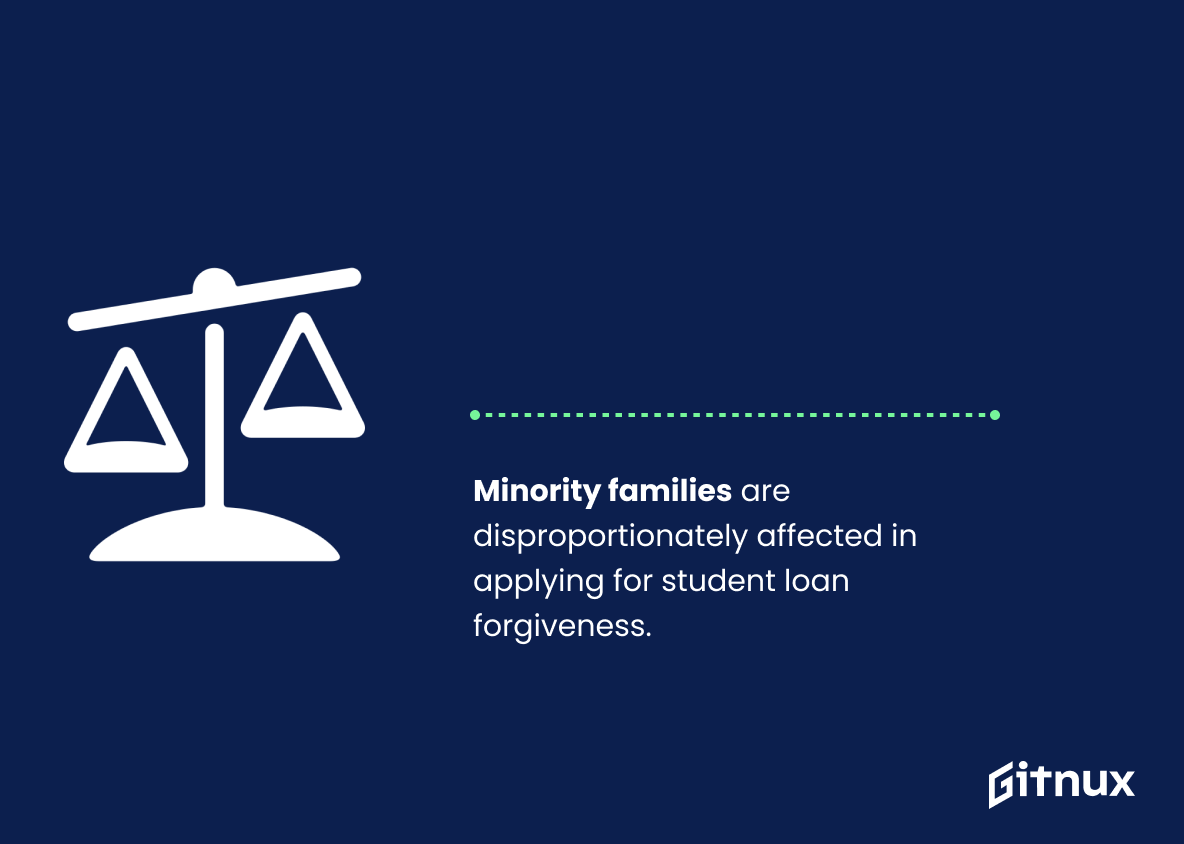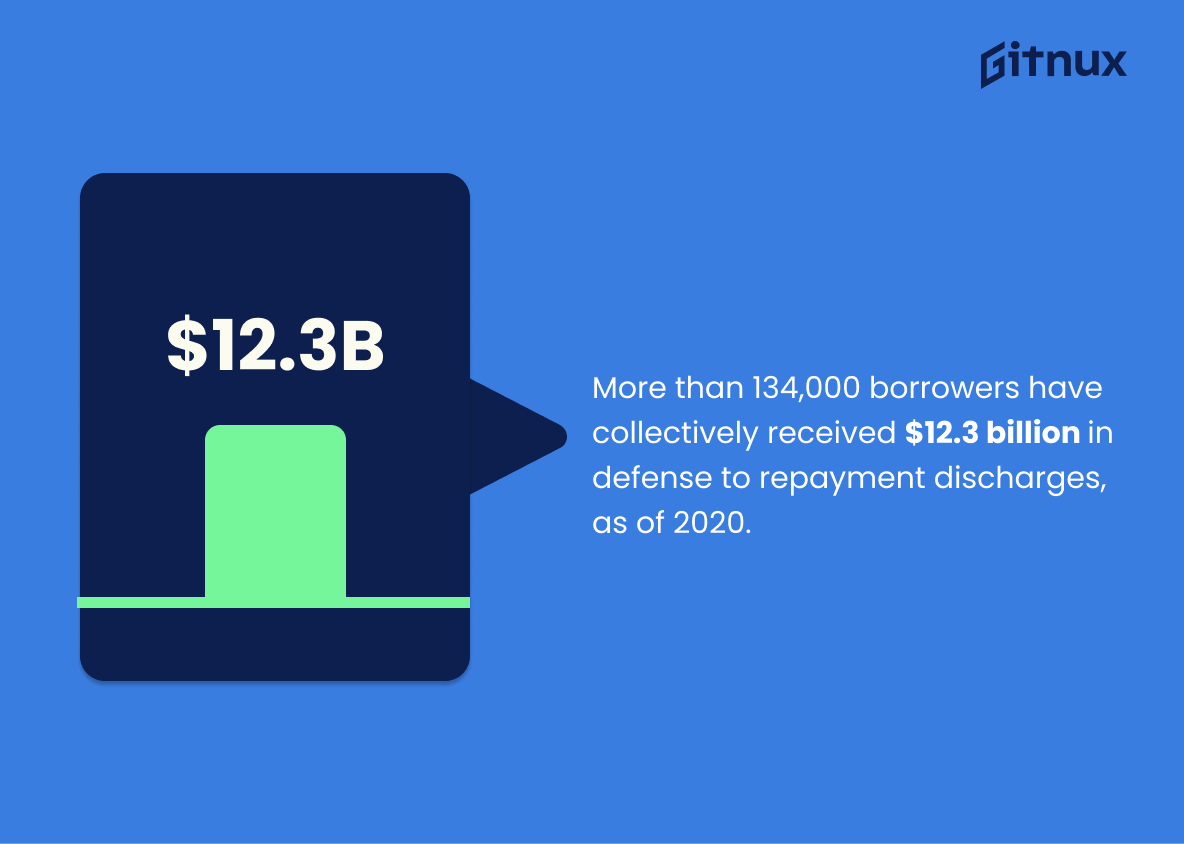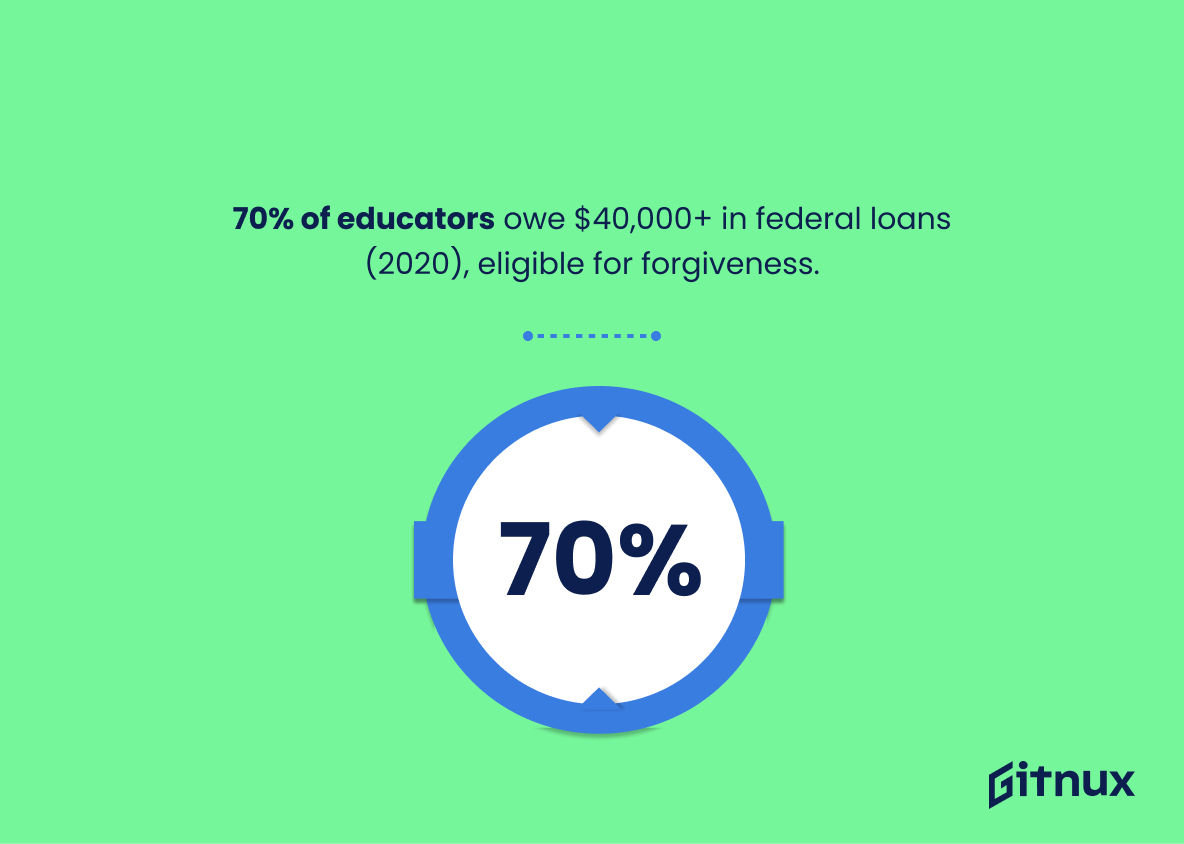The ever-rising costs of higher education have propelled student loan debt to an all-time high, leaving many graduates grappling with astronomical levels of financial burden. In the midst of this financial quagmire, terms like ‘Student Loan Forgiveness’ are beckoning like a lighthouse in stormy seas. It stirs hopes of relief, enabling borrowers to envisage a future free from the clutches of stifling educational debts. But how realistic is this notion? Our deep dive into the world of Student Loan Forgiveness Statistics will help illuminate the facts, unraveling the intricacies and taking you behind the curtain of this hot-topic issue.
The Latest Student Loan Forgiveness Statistics Unveiled
Aggregated student loan debt reaches $1.7 trillion.
Unpacking the gargantuan $1.7 trillion student loan debt figures, it becomes incredibly evident why discussions around Student Loan Forgiveness have gained precedent in recent years. This astronomical figure standing as an emblem of the growing financial burden, forms the boulder that countless graduates and professionals have had to carry ignorantly, baring an immense load on their way to financial freedom. It also underscores just how many people would experience a breath of fresh air if such forgiveness initiatives were to be implemented. This figure confirms the urgency and necessity of these forgiveness discussions, and lays a sobering foundation for understanding why so many voices are joining the call for transformative change.
Biden administration has approved over $11 billion for student loans forgiveness under a federal law.
When delving into the panorama of Student Loan Forgiveness Statistics, one cannot bypass the striking fact of the Biden administration sanctioning over $11 billion for student loans forgiveness under a federal law. This hefty amount draws a powerful picture of the government’s committed effort to reduce the burden of student loans. In this vibrant landscape of statistics, the $11 billion stands as a towering pillar of hope for many students shackled by education expenses, serving as a testament to the magnitude of debt relief measures being championed by the current administration. It breathes life into the abstract world of numbers, connecting policy decisions in the high towers of administration to real-world emotional and economic relief for millions of Americans.
As of 2021, only about 2.2% of borrowers have received a student loan forgiveness.
Lifting the veil on the realm of student loan forgiveness, this potent percentage – a seemingly small 2.2% as of 2021 – amplifies the voices of the minority who managed to navigate the labyrinth of requirements and received loan forgiveness. It tackles not just numbers, but also untold narratives of borrowers’ struggles and victories. It draws focus onto a crucial aspect: the complex journey to securing loan forgiveness. Be it shedding light on potential systemic hurdles, sparking a dialogue about reform necessity or punctuating the room for policy improvement, this statistic forcefully punctuates the discourse within a blog post about Student Loan Forgiveness Statistics. It presents a compelling backdrop, and foregrounds the need for continued discussion, exploration and action in the realm of student loan forgiveness.
Approximately 98% of applicants to the Public Service Loan Forgiveness program were rejected.
Unraveling the threads of this stark statistic — about 98% of applicants to the Public Service Loan Forgiveness program were rejected — paints a vivid picture. It serves as a glaring neon signpost pointing to the intricate maze that students must navigate while seeking loan forgiveness, a testament to the potential hurdles and pitfalls inherent in this process.
In a blog post pertinent to Student Loan Forgiveness Statistics, this figure acts like a critical plot twist, inviting readers to dive deeper into the narrative of loan forgiveness. It illuminates the unfortunate reality that relief from loan burdens may often be tantalizingly dangled in front of students, only to be snatched away by complex processes and stringent requirements.
Faced with such a startling revelation, readers might find themselves compelled towards activism or policy advocacy, to help rewrite the story of student loan forgiveness, making it more accessible and less convoluted. Therefore, this statistic is not just a mere number, but a call-to-action, fueling dialogue, sparking debates, and shaking complacency within our education loan systems.
The average American student loan debt per borrower is $37,693.
Delving into the heart of the American students’ financial struggle, a whopping debt amount of $37,693 can be seen shackled to a standard borrower’s ankles. This weighty figure gives a voice to the silent struggle of those navigating the turbulent waters of higher education. Oh and how it sings a siren song for a potential solution – loan forgiveness. These alarming figures demand our attention in a discourse on Student Loan Forgiveness Statistics, underlining the power such a program can wield in lightening the burdens of those pursuing academia and shaping a debt-free future for our nation.
Approximately 45 million Americans hold student loan debt.
Diving headfirst into the ocean of Student Loan Forgiveness Statistics, it’s impossible for us to ignore the monumental fact: an astonishing 45 million Americans are shackled with student loan debt, a statistic that speaks volumes. This bold number underlines the pressing reality of just how many people are seeking solace in student loan forgiveness programs. It paints the vast canvas of individuals yearning for a beacon of light in the labyrinth of financial repayment. Ultimately, this mind-boggling statistic serves as a barometer of the student loan crisis the nation is currently battling, emphasizing the urgency for effective loan forgiveness solutions.
1.3 million borrowers have made enough payments to qualify for Public Service Loan Forgiveness, but only 1% have had their loans forgiven.
Shining a spotlight on the compelling statistic that a whopping 1.3 million borrowers have paid enough to meet the qualifying threshold for Public Service Loan Forgiveness, yet a miniscule 1% have seen their loans absolved, illuminates stark disparities in the system of student loan forgiveness. This bears significance in the discourse of Student Loan Forgiveness Statistics, magnificently underscoring the seemingly Herculean task borrowers face to attain loan forgiveness. An alarming feat that serves as a wake-up call for policymakers, throwing open the debate around the fairness and functionality of the existing Public Service Loan Forgiveness structure.
Income-Driven Repayment plans, which lead to loan forgiveness, will end up forgiving nearly $207 billion.
In the sphere of student loan forgiveness statistics, the notion of Income-Driven Repayment plans allowing nearly $207 billion in loan forgiveness serves as a beacon of hope for financially beleaguered students. This gargantuan figure is not just a number, it is an indication of significant relief on the horizon for borrowers. Equating to countless opportunities, dreams pursued without the cloud of financial burden, this statistic carries the weight – the weight of potential financial freedom. It is a vibrant thread woven into the fabric of the discourse around student loan forgiveness, casting a new light on the possibilities of these repayment plans in enabling borrowers to break free from their towering debt.
The average Public Service Loan Forgiveness recipient gets $66,453 forgiven.
Delving into the realm of Student Loan Forgiveness Statistics, one particular figure stands out conspicuously – the average Public Service Loan Forgiveness recipient is issued a pardon worth $66,453. This staggering numeral shines a compelling spotlight against the often dismal backdrop of escalating student loan obligations. Akin to a lighthouse amid the fog, it serves as a beacon of hope that student debt, although intimidating, does have avenues of relief. It further underscores the potential impact of such loan forgiveness programs, placing in quantitative perspective the level of financial liberation they could offer. Ultimately, this figure constructs a tangible pathway in navigating the complexities of student loan discussions, making it an essential lattice in our understanding of student loan forgiveness terrain.
As of 2020, fewer than 20,000 applicants have received loan forgiveness through PSLF.
Highlighting the statistic that as of 2020, under 20,000 applicants have attained loan forgiveness via the Public Service Loan Forgiveness (PSLF) program can indeed cast a significant light on the narrative about Student Loan Forgiveness Statistics. Not only does this number create a reality check, but it also sets an important perspective. Considering that millions of students nationwide hold education loans, the fact that less than 20,000 have availed benefits from the PSLF program underlines the program’s potentially inadequate reach, stringent eligibility requirements, or lack of awareness among borrowers. Therefore, it’s an eye-opening metric that guides a vital conversation around the effectiveness and accessibility of such loan forgiveness programs.
Nearly 33% of student borrowers say it will take them more than two decades to pay off their loans.
In the unfolding chapters of Student Loan Forgiveness Statistics, the weight of the echo that ‘Nearly 33% of student borrowers predict a repayment timeframe extending beyond two decades’ carries immense significance. This staggering figure underscores the magnitude and longevity of the debt burden shouldered by student borrowers, painting a poignant picture of a generation strapped with financial strain. It brings to light the reality that repaying student loans is not a short-term commitment but often a lifetime’s responsibility — a plenary part of their lives’ fabric. The chill of this statistic seeping into the broader conversation on loan forgiveness highlights the pressing need for comprehensive measures and policies. The mounting debt narrative, evidenced by this figure, plays a pivotal role in catalyzing the push for student loan forgiveness and reform, igniting a spirited dialogue around the promise of a more sustainable and fair student lending landscape.
As of 2019, only 32 people out of nearly 28,000 applicants under Temporary Expanded Public Service Loan Forgiveness program received forgiveness.
Unveiling the curtain behind the numbers highlights an unexpected scenario surrounding the Temporary Expanded Public Service Loan Forgiveness program. The surprisingly low number of successful applicants (just 32 out of nearly 28,000) in 2019 is an extreme illustration of the difficulties that many people face when seeking relief from student loan burdens.
This statistic opens the door to an essential conversation about how effective student loan forgiveness programs are in practice. Despite thousands hoping and applying for loan forgiveness, the windfall reality is quite stark. Effortlessly, this figure underpins concerns about the intricacy of the loan forgiveness process, the eligibility criteria, and the overall accessibility of such programs in supporting graduates in their financial journeys.
Therefore, it acts as a compelling springboard to set the tone of the blog post, stimulating discussion about the current realities and potential improvements to the system. The proportion represents not just a number, but individual stories of frustration and disappointment that echo through the static of unmet expectations. It is, in essence, a stark commentary on the challenge of navigating student loan forgiveness landscape.
Minority families are disproportionately affected in applying for student loan forgiveness.
Delving into the insightful realm of student loan forgiveness, it’s imperative to underscore the stark disparity impacting minority families. Their disproportionate representation in the application process for student loan forgiveness not only highlights a convoluted web of income and education inequality, but also sheds light on the systemic barriers these demographics face in their quest for financial emancipation through education.
More than just numbers, this statistic resonates as a clarion call for equity in access to loan forgiveness programs. By laying bear this disparity, we challenge policymakers, educators, and lending institutions to create a more inclusive student loan landscape, one that levels the financial playing field for all families regardless of their racial or ethnic background. In essence, it is a crucial catalyst for change within our discourse around student loan forgiveness.
More than 134,000 borrowers have collectively received $12.3 billion in defense to repayment discharges, as of 2020.
In the grand tableau of student loan forgiveness, the statistic of 134,000 borrowers being collectively relieved of a staggering $12.3 billion debt through defense to repayment discharges offers a vivid snapshot of the ever-growing momentum behind the movement. Contextualized in a blog post about Student Loan Forgiveness Statistics, it shreds light on the depth of the impact this financial intervention has made. Not merely a measure of past accomplishments, this statistic signals a broader trend and fuels the conversation about easing student debt burden, a topic that is increasingly gaining steam within political and educational sectors. Therefore, it sets the stage and provides critical numerical context to readers, wanting to understand or engage in discussions centered on policy changes in student loan forgiveness.
Over two-thirds of educators, almost 70%, reported owing $40,000 or more on their federal student loans, as of 2020, making them potential candidates for student loan forgiveness.
Highlighting the fact that nearly 70% of educators possess federal student loans amounting to $40,000 or more, this statistic presents a compelling portrait of the current education landscape. It reflects the onerous financial burden faced by educators that extends well beyond their years of professional training. This lays the groundwork to delve into the need for student loan forgiveness, painting a compelling backdrop to discuss potential solutions or reforms in the system. Therefore, within the canvas of Student Loan Forgiveness Statistics, it stands as a powerful testimony to the urgent need for revisiting and rethinking our student loan policies.
Conclusion
Navigating student loans can be a stressful journey and loan forgiveness can be a beacon of hope to many. However, the statistics reveal a distressing picture. The current system offers limited help and the acceptance rates are disappointingly low. It highlights an urgent need for policy reform and increased awareness, to make loan forgiveness a viable option for a larger number of students. Lastly, till significant changes are made, it’s crucial to explore multiple repayment strategies and stay informed about the ongoing landscape of student loans and forgiveness options.
References
0. – https://www.www.brookings.edu
1. – https://www.www.marketwatch.com
2. – https://www.www.studentloanplanner.com
3. – https://www.www.federalreserve.gov
4. – https://www.www.debt.com
5. – https://www.www.cnbc.com
6. – https://www.www.politico.com
7. – https://www.www.nea.org
8. – https://www.educationdata.org
9. – https://www.www.businessinsider.com
10. – https://www.www.nerdwallet.com
